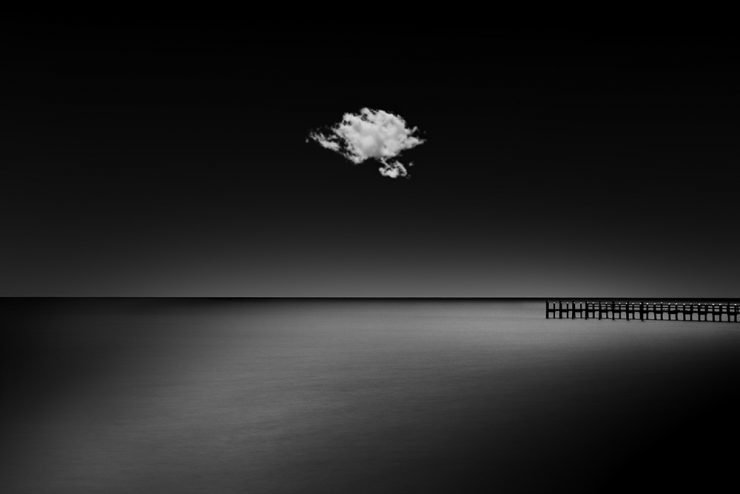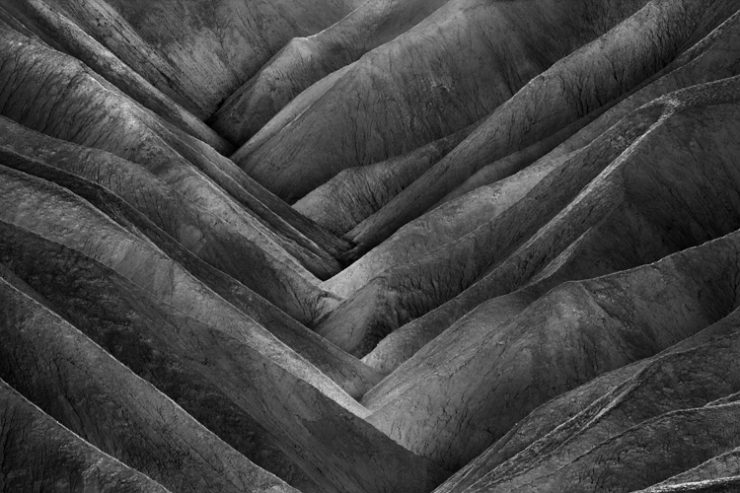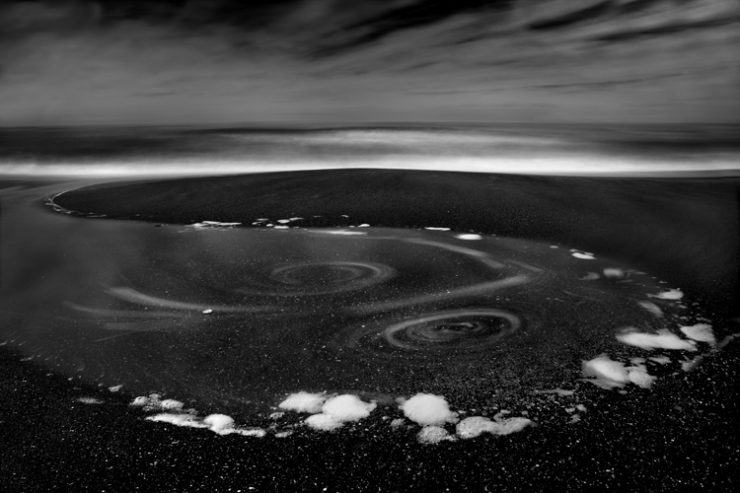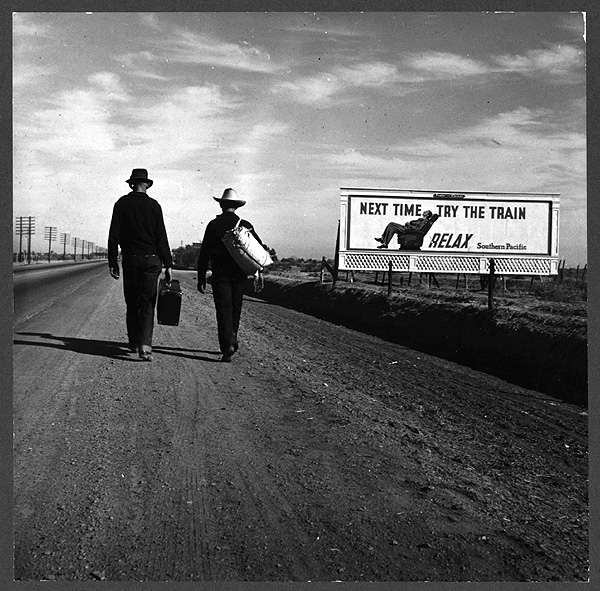
I first saw Cole Thompson’s image “The Angel Gabriel” in a major photography magazine a few years ago. Then I saw it in another… and it started popping up in some of my favorite photography websites, along with his other images. I was particularly struck by the strong, but simple compositions of many of his photos, each using bold lines and shapes along with high contrast and a generally dark, moody atmosphere. Many of his photos utilize long exposures to produce a flowing, ethereal ambiance. I eventually looked up his site, and was astounded by the consistently first-rate quality of his work.Now, years later, I’m no longer surprised; Cole’s work has been featured in countless magazines and gallery exhibitions, and he’s won numerous awards from juried shows. Recently, one of his photos was featured in George Barr’s Why Photographs Work. To learn more about Cole and his work, visit his website, Cole Thompson Photography.
On July 7th, I met with Cole in his Fort Collins, CO, office to discuss his approach to creating images. The conversation, though, meandered for hours through a wide range of photographic topics, each important in its own right. Today’s article extracts the topic of individualism and artistic interpretation from the conversation, but articles covering additional topics will follow in the next several days.
MG: A lot of visitors to Light and Matter are interested in photography, but don’t feel as though they are artistic themselves. You started out in photography the same way; how did you make the transition from being interested in the technical side of things to truly being an artist?

Cole: I have a feeling that a lot of people who don’t consider themselves artistic are like me: they grew up in an environment where they didn’t really have a lot of exposure to art and music, and so they never developed those skills, and grew up believing that they don’t have any artistic talent. I used to joke that if someone put a rock in front of me and asked me to draw it that I wouldn’t have been able to do it. So I felt, as a suspect many do, that photography was a way to be kind of artistic, not by learning to overcome my lack of artistic abilities, but by learning the technical side of things.
But I couldn’t overcome my lack of artistic abilities with technical abilities alone, and so for many years I just considered myself a photographer, and I was content to simply try to imitate the style and artistic vision of others. When I was younger the greatest compliment that someone could give me was “Wow, that looks like an Ansel Adams!”
But then I was down in Santa Fe at the photo review they have every year, and a reviewer looked at my work and told me basically that Ansel had done Ansel, and I was unlikely to do Ansel any better. It suddenly hit me: Was that really my goal in life, to imitate somebody… to be the best Ansel imitator? Did I not have any aspirations or goals beyond that? So that got me thinking a little bit.
I also had a mentor who was truly an artist and used to teach photography, and she was constantly telling me to change the image. I would tell her “I can’t. I’m a photographer. My duty is to accurately represent the image.” Over time, though, I began to realize that everything that I did as a photographer did modify the image – how I framed it, where I stood, the focal length, the exposure – everything changes it.
With the advent of digital, we started hearing a big, new discussion going on: what should photographers do in Photoshop? How much should they manipulate an image? All of these forces just kind of came together and I realized that I didn’t want to be a photographer and capture photographs, I wanted to be an artist and create images. When I stood somewhere and looked at a scene, I had in my mind what I wanted that to look like, and my goal as an artist was to bring the image into compliance with my vision. There’s nothing wrong with being a photographer – photographers are needed for lots of thing, whether it’s photojournalism where accuracy is important, whether it’s portraiture or medical photography; that’s OK, but I didn’t want to be just a photographer. I started to want to be an artist.
MG: You say that there’s a difference between being a photographer and being an artist; I would say that there’s a difference between knowing how to use a camera and being a photographer, but I think we’re getting at the same thing. I suspect, though, that we’ll disagree about where we’d draw the line between what is artistic and what is simply the act of operating equipment properly.
Cole: I don’t have an opinion where that line is, so we can’t disagree. It’s in the eye of the beholder.
MG: Many of my influences in photography are photojournalists, and they usually have very distinctive styles of their own. We can look at their photographs, even if they are accurately depicting what the photographer saw, and say “That looks like a photograph by Cartier-Breson, or Dorothea Lange”. As you’ve said, just choosing a lens and composing a photo, and deciding when to release the shutter changes the image. Even an “accurate” photograph has so much of the photographer’s style built into it that it becomes distinctive and, if the photographer is good, it has more impact and conveys more emotion. A good photojournalist is as good an artist as any other photographer or artist, in my opinion.
I saw that, at one point, you posted a Sears portrait taken of your kids in the 1980s…
Cole:Yes, I use that frequently, because people want to argue with me that photography is art, and I show them that hideous portrait of my children with their hideous eighties hairstyles and I say “Is that art?”





